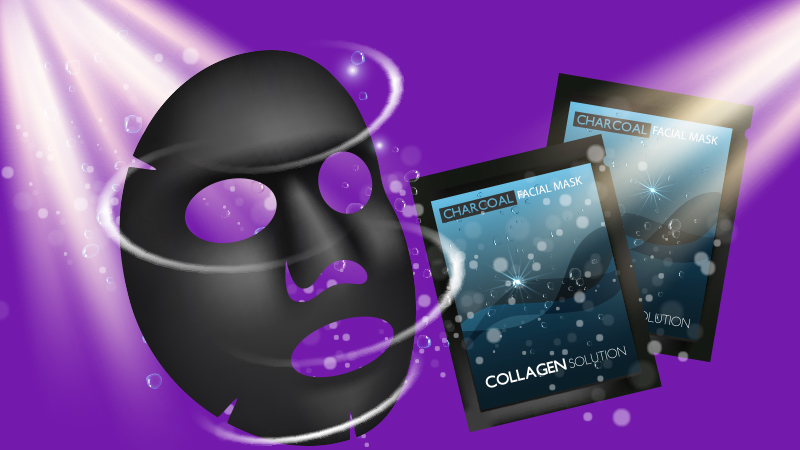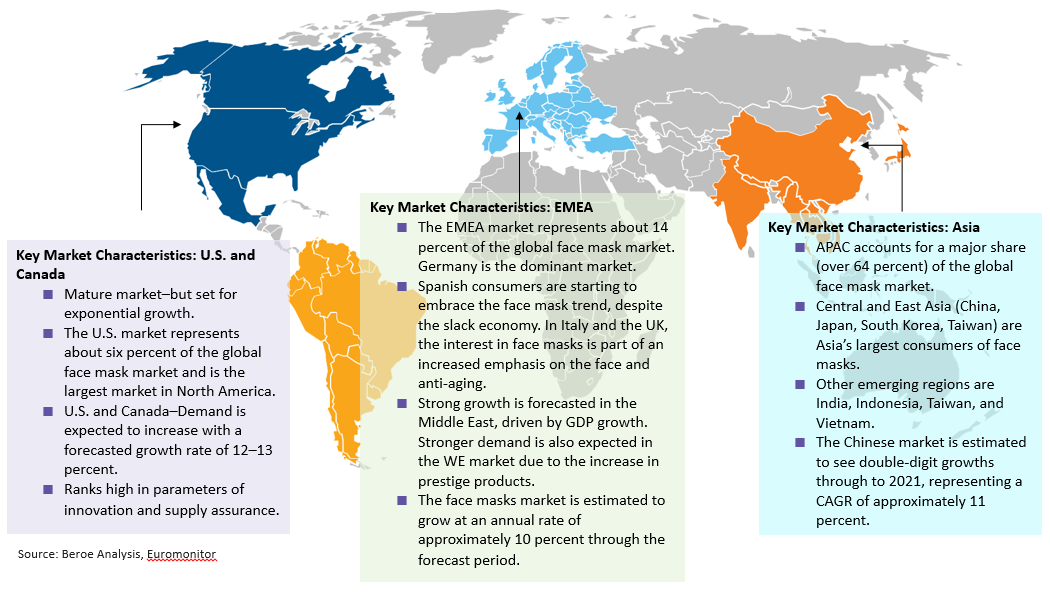
Cosmetic Face Mask Market to reach $10 billion by 2022


The global face masks market has rapidly grown in the last five years, spurred on by innovation and the limitless diversity of consumer aspirations. The launch of new products, research and development, product differentiation, and collaborations are some of the strategic moves implemented by the key players operating in the market. This market was valued at $6.8 billion in 2018. It is expected to grow at a rate of 9.5 percent annually, and is anticipated to reach $10 billion in 2022.
With such remarkable growth, the market is flush with various masks that incorporate a dizzying array of ingredients and technologies. The vast majority of these draw inspiration from traditional skin care creams/lotion ingredients. The functional claims made by face masks are also largely in line with the overall skin care sector; brightening and moisturising/replenishing are dominant, and anti-aging and anti-pollution/detoxifying are quickly catching up.
Face Masks: Global Market Outlook
The global face mask market has witnessed robust growth in the last five years. Valued at $6.8 billion in 2018, it is expected to grow at a rate of 9–10 percent annually and reach $10 billion in 2022. The global face mask market is driven by various factors such as growing accessibility to customised products, their ease of use, lifestyle changes, and the rising number of beauty retailers.
The Asia-Pacific is expected to remain the most profitable market for face masks, mainly driven by the region’s improving economic strength, and consumers’ changing lifestyles accompanied with growing disposable incomes. China is the largest market in this category and represents about half of the global face mask market.
China is by far the largest market in the face masks category. Valued at over $3 billion in 2018, it represents a significant 48 percent of the global market. Despite its sheer size, the Chinese market is estimated to see double-digit growths through to 2021, representing a CAGR of approximately 11 percent.
Face masks have resounded with APAC customers. The rising usage of face masks in Asia is mainly due to its ability to offer consumers different skincare benefits in a suitable manner and short turnaround time. In this day and age, face masks offer time-pressed consumers a quick beauty recharge. The APAC face masks market differs from that of the U.S. and European markets. The key difference lies in consumer usage. With the emerging trends of multi-masking and using masks up to twice a day, Asian consumers are obviously heavy face-mask users. While this is something that we see less from the U.S. or European markets, face mask use is definitely intensifying in these markets.

Growth Opportunities and Challenges
While the beauty market continues to expand worldwide, its gargantuan appetite is being fed with products that keep differentiating and evolving in form and function. In the skincare realm, the face mask has firmly held its place in a market hungry for innovation.
There are definite opportunities in the premium category of face masks. One such prospect is the high-end sheet masks that integrate aesthetic salon-equivalent treatments and are differentiated from the luxurious versions of moisturising sheet masks. This is important for the Asian region where micro-cosmetic surgery is common and is considered as a trend. Consumer upgrade is increasingly prominent in Asia, particularly as the region sees a rising middle-class population in countries such as China and Thailand.
Asian consumers are known to be the biggest users of face masks. Masks are a part of their regular skin care routines. Asian consumers are the key target audience. However, they are also among the most challenging consumer base when it comes to sustaining consumer interest, especially since the face mask has effectively penetrated their beauty regimes. To overcome this, beauty brands are increasing their investments in product development to launch innovative offerings that will stand out in the saturated market.
Diversifying to be Different
With the face market getting more crowded, differentiation has never been as important and inevitable for manufacturers.
- Formularies with actives drawing inspiration across all cosmetic categories, as well as food and pharmaceutical industries and forms delivering novel sensory feelings
- Substrates varying in material sources, fibres/structures, and shapes
- More specific/segmented claims in terms of application occasions and target groups
Among all types of masks such as sheet, clay, gel, cream, and even spray/foam, sheet masks have been dominant—in both market share and growth rate—ever since they entered the market nearly a decade ago. The popularity of these products is expected to be maintained in the near future, largely due to increased diversification, from formulary to substrate. For the former, whether it is emulsions, gel or suspensions, the differentiation lies largely in ingredients, particularly the actives. For the latter, fibre/fabric plays a vital role as the sheet substrate is moving beyond simply acting as a carrier to enhance or complement the skin care benefits of the formulary.
Quality Concerns
Many of the available face masks use low-end ingredients and were found to contain ingredients such as topical steroids, fluorescent brightening/whitening agents, and preservatives. Many of these products were found to contain 6,000 times the level of topical steroids permitted by domestic law.
Topical corticosteroid, especially fluocinolone, has attracted particular attention since then. It is known that the excessive use of the steroid could cause serious side effects such as subsequent dependence. When it comes to skin applications, such steroids are only allowed to be prescribed by doctors to treat inflammation such as eczema and allergies. Their uses in cosmetics have never been legally allowed. Along with topical steroids, fluorescent brighteners (or fluorescent whitening agents) have also caused great concern among face mask users in China, due to a possible carcinogenic effect upon continuous usage. Another concern involving face masks is the use of preservatives and moistened face masks as a cultural medium for bacteria.
Therefore, being fluorescent-free and preservative-free is increasingly becoming a point of differentiation for face masks.
While the Chinese Food and Drug Administration (CFDA) is now stepping up its inspection efforts on face masks, with microbiological safety being very closely monitored, brands find it is increasingly difficult to maintain the balancing act between their claims and quality.
Conclusion
The face masks market will continue to be vibrant. Currently, it does not show any signs of slowing down. Brand owners are considering innovation with ingredients, textures, and formats. The premium tag attached to mask offerings will play a big part in the coming years. Sustainability and awareness around environmental footprints will also impact decisions around packaging and the type of materials used in face masks.
References
- Brand Websites
- Euromonitor
- Nonwovens Magazine
Related Insights:
View All
Get more stories like this
Subscirbe for more news,updates and insights from Beroe






